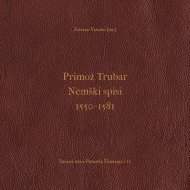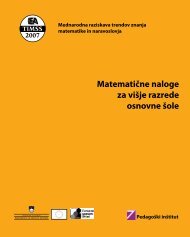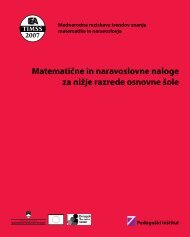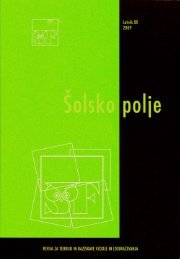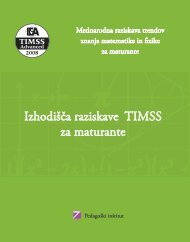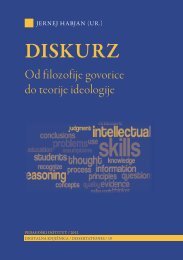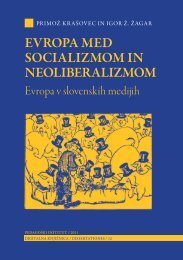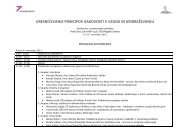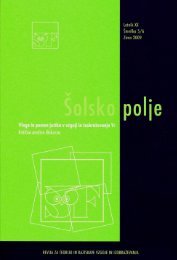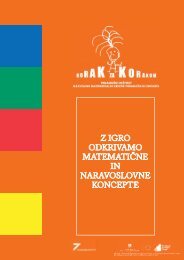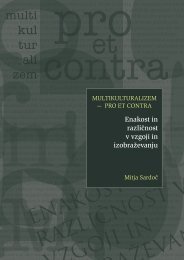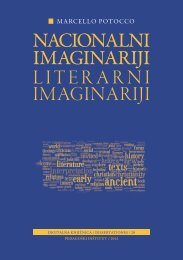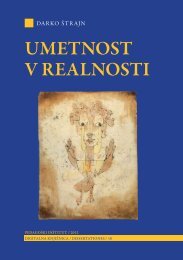1. PDF dokument (3365 kB) - dLib.si
1. PDF dokument (3365 kB) - dLib.si
1. PDF dokument (3365 kB) - dLib.si
- No tags were found...
Create successful ePaper yourself
Turn your PDF publications into a flip-book with our unique Google optimized e-Paper software.
Povzetki/Abstractsrazličnih sodobnih, birokratsko skonstruiranih projektov Evropske komi<strong>si</strong>je,npr. t. i. »medkulturnega dialoga«.Razprava, ki je uravnoteženo napisana na podlagi virov in historiografskeliterature, vsebuje prvi celovit slovenski prevod Tolerančnega patenta infak<strong>si</strong>mile njegovega nemškega izvirnika.Ključne besede: Habsburška monarhija, jožefinske verske reforme, Tolerančnipatent (1781), verska toleranca, etatizem, državno cerkvenstvo, febronianizem,kameralistika“Intercultural dialogue” of the European Commis<strong>si</strong>on:New religious tolerance and Emperor Joseph II’s Patentof Toleration (1781)With the Patent of Toleration (1781), the absolutist Emperor Joseph IIof Austria granted freedom of worship to Lutherans, Calvinists and membersof the Greek Orthodox church living in the territory of the Habsburgmonarchy, and later also to the Jews. This edict should be con<strong>si</strong>dered withinthe context of the Josephine reforms of the system of government, particularlyin the light of the Emperor’s efforts to modernise the Monarchy andmake it economically competitive with other key powers on the Europeancontinent – especially France and Prus<strong>si</strong>a. The Patent of Toleration thus fit<strong>si</strong>n the broader context of Joseph’s religious reforms which were driven bythe Emperor’s own political agendas. The resonance of these reforms shouldnot be viewed in isolation from the interests of the state Church, which hadbeen trying to consolidate its po<strong>si</strong>tion in the Habsburg monarchy <strong>si</strong>nce the16th century. Nor should one dismiss the role of Gallicanism, Febronianismor for that matter the <strong>si</strong>gnificance of the Enlightenment philosophicaldiscus<strong>si</strong>ons on the nature of the state as an organisation and seat of authority.Within this latter purview falls also the ri<strong>si</strong>ng influence of the cameralisticapproach to state administration. The Patent of Toleration revokedthe measures taken by the secular authority against non-Catholics betweenthe end of the 16th and the first decades of the 17th century. At the timethese measures had been adopted to boost the political self-assertion of theCatholic Church: the Catholic Reformation movement was followed by theCounter-Reformation, which eventually led to the re-catholicisation of thelands under the Habsburg rule. The religious Roman-Catholic unificationof the larger part of the Habsburg monarchy (all the Cisleithan lands; underthe Turkish occupation the Counter-Reformation measures did not reachvery far into the Hungarian part of the empire) resulted in the changes inthe cultural milieus of individual crownlands and kingdoms (e.g. the Kingdomof Bohemia). Most <strong>si</strong>gnificantly, it led to the economic weakening of205



